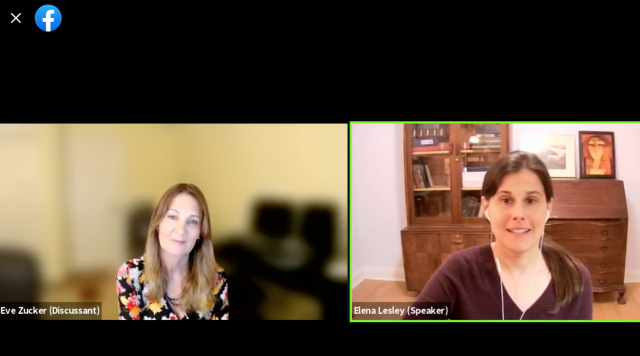Testimonial Therapy Used to Help Khmer Rouge Survivors Heal

- By Teng Yalirozy
- September 19, 2021 4:37 PM
Giving value to their memories helps both “old” and “new” people cope with what they lived through, according to an anthropologist
PHNOM PENH--“Testimonial Therapy” for mental health treatment has helped survivors of the Khmer Rouge Regime deal with the trauma and, when adapted to the Cambodian context, has proven successful in several aspects, an expert recently explained.
Although the Democratic Kampuchea of Pol Pot and Khieu Samphan collapsed decades ago, the regime and the years of hostilities that followed continue to haunt those who lived through them and for whom more psychological support is needed, Elena Lesley said.
Lesley is a US anthropologist who worked in Cambodia as a journalist for the Phnom Penh Post in 2004 and has later on researched the mental-health aftermaths related to the memory of the Khmer Rouge period.
In her most recent project, she has worked on the experience of survivors undergoing Testimonial Therapy, a method that tends to be successful in Cambodia, as evidenced by symptom trajectories and conversations with survivors and their social networks, Lesley said.
“If testimonial therapy is done properly, people don’t recall their lives from the vantage point of other people, but they can recall events in different manners, and oftentimes in a way that makes them feel empowered about their lives and current situation, which usually is able to create a positive trajectory,” Lesley said during a webinar held on Sept. 17 by the Center for Khmer Studies in Cambodia.
What is Testimonial Therapy?
Testimonial Therapy is a treatment method for traumatized people, during which their story of having lived through difficult situations such as political violence, genocide or wars is documented as a testimony, Lesley explained.
The method originated in Latin America in the 1970s, and was first used in Chile where repression and torture marked the dictatorship of General Augusto Pinochet in the mid-1970s through the 1980s. Testimonial Therapy has been used in United States to treat refugees, immigrants as well as women victims of domestic violence.
The treatment was introduced in Cambodia as part of a study initiative that included India, Sri Lanka, the Philippines and Cambodia, Lesley said.
Patients typically work one-on-one with their counselors to tell their story and have it documented. Done in the course of four days, this therapeutic session is short and intensive, ending with a public ceremony during which the person’s testimony is read out, Lesley said.
It was a Danish researcher, Inger Agger who attempted in the late 2000s to incorporate a spiritual ceremony into testimonial therapy in Cambodia to make it more culturally relevant. She worked with the Transcultural Psychosocial Organization (TPO) and Buddhist monks to bring in elements of the bangsokol ceremony held at Buddhist funerals in the country.
During this bangsokol ceremony, which takes place on the last day of the patient’s treatment session, the counselor reads the testimony out loud and gives it to the monk in attendance for blessing before returning it to the patient.
“There’s a general blessing ceremony, and then the idea is that the merit that is generated through actually reading that testimony is dedicated to the people's loved ones,” Lesley said. “This idea…in Cambodian Buddhism is that you have ongoing relationships and exchanges between the dead.”
In 2017, a study by Jennifer Esala and Sopheap Taing showed that testimony therapy combined with a traditional ceremony reduced symptoms of post-traumatic stress disorder (PTSD), depression and anxiety in traumatized survivors who had been exposed to wars. However, the long-term effects remain unclear.
Elena Lesley’s Research
Lesley’s research consisted of studying the older people who had been through the Khmer Rouge regime and people who have reported psychological distress related to the regime. Those who participated in her research were from Battambang, Kampong Cham, Prey Veng, Pursat and Tboung Khmum provinces.
She studied two groups of people: former “new” people and former “based” people—during the Khmer Rouge regime, “new” people referred to city residents while “based” ones to those from rural areas. Lesley said the most notable distinction between former new people and former based people was the timing of events that marked them the most.
“A lot of the new people did have a story that adheres more to what we think of as a standard narrative of the Khmer Rouge, starting by really focusing on 1975, the evacuation of Phnom Penh and on those years of Democratic Kampuchea, and the sort of targeting of intellectuals and urbanized kind of people and then capering of around 1979,” she said.
“For the new people, there would not be a whole lot in the early life, then 1975 to 1979, and then not a whole lot afterward,” Lesley said. “For the former based people, there were a lot more…in 1970 to 1975, and also in 1979 to late 1990s. There was a lot more that was narrated and was not seen as being necessarily as important in the testimony of former new people.”
Lesley said that the former-based people always had a desire to tell their story in connection with patriotism and their experience of the actual Democratic Kampuchea period.
“The other big difference is that they would talk more about the vision within the Khmer Rouge because they had been sort of purged and part of some factions where something had happened,” she said. “They would talk about the Khmer Rouge not as a sort of, like, a pack and indecipherable entity but as a very real conglomeration of human actors who were often fighting among themselves.”
Challenges in Adapting Testimonial Therapy in Cambodia
Before she started her project, Lesley said her concern was that people might not want to talk about their past. Excavating and nurturing traumatic memories is against the Buddhist ideal of detachment, she said.
She also was concerned about asking people to bring up those memories. “If you spend too much time ruminating on this thing, this can serve as, like, a trigger to this downward spiral of negative rumination, and that can also cause psychological and physical problems.
“That may also activate undesirable emotions, like a desire for revenge and anger,” she said. In addition, a psychological study has shown that people with unstable lives can have a negative mental outcome when narrating their stories. “Those were all parts of my hesitation with the process.
“That is all the thing you have to be careful about,” said Lesley. “If you don’t do it in the right setting, if you do it with the wrong individuals, and if you create the wrong kind of narrative, those could all have negative mental health outcomes.”
Moreover, people may not want to expose their personal stories or may be shy to share certain points of their lives, she said. Therefore, the final testimony may have to go through many edition sessions and some parts may not be included in the final one.
“There might be a difference in that sense even between the short version that is read out loud and the longer version that people keep for themselves,” she said.
More treatment services are needed and mental issues must be properly addressed
Mental health issues can create long-term and intergenerational consequences, Lesley said. In that sense, more psychological-treatment services for survivors of the Khmer Rouge regime are needed.
During sessions, people would speak of their dealing with sleeplessness, nightmares, thinking too much about it, and they did not seem to have any recourse to address their problems, which Lesley felt daunting.
“The burden of the mental impact of this sort of violence and displacement and stuff can have long-lasting and intergenerational effects,” she said. “Especially in a resource setting, when you don’t have a lot of access to help and to treatments, it’s very challenging and can affect people’s lives in a lot of different ways and also their families.”
Lack of resources and education about the mental issues of survivors, as well as stigma, are the major barriers to treatment, Lesley said. “But stigma about having mental health issues is not as strong as it once was, and you just have to destigmatize mental health problems.”
Moreover, some survivors of the regime who have post-traumatic stress disorder (PTSD) tend to have ineffective parenting way, she said, and people with PTSD are likely to be hypervigilant with their children.
“Maybe they were overly anxious and detached in the way that they are parenting their kids, which may affect their child in terms of development and the way they perceive and interact with the world,” she said. “Any sort of major trauma can have intergenerational effects in terms of the idea of having hypervigilance…It’s almost like a veteran coming out of a war: It can affect his parenting way.”
Therefore, it is crucial to be creative with the management of local resources that are already available, Lesley said.
Resource people in a rural community should be trained to provide services to those who have no access to hospitals or psychologists. Training local people to provide treatment services and handle emergency mental health issues in numerous places can be one way to begin to address the mental burden in the country, Lesley added.















